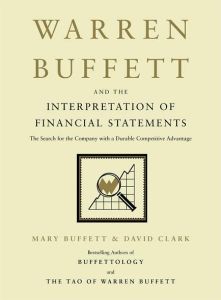Acesse a sua conta getAbstract para obter o resumo!

Acesse a sua conta getAbstract para obter o resumo!
Mary Buffett and David Clark
Warren Buffett and the Interpretation of Financial Statements
Scribner, 2008
Sobre o que é?
Learn how Warren Buffett identifies the best stocks by seeking clues from financial statements.
Recommendation
Financial statements hold clues about the future performance of a company, and Warren Buffett’s quest to find such clues has put him among the ranks of the wealthiest people in the world, according to Buffett experts Mary Buffett (his former daughter-in-law) and David Clark. Seeing the interpretation of financial statements through Warren Buffett’s eyes is both instructive and insightful. He routinely calculates meaningful financial ratios from line items in financial statements to distinguish the most promising companies from the rest. Although financial novices may have the most to learn from this book, the authors include savvy bits of “Buffettology” for more seasoned investors’ benefit. getAbstract recommends this book to readers who want a basic introduction to financial statement analysis and, perhaps more importantly, who want to learn how “the Oracle of Omaha” picks his winning investments.
Summary
About the Authors
Mary Buffett and David Clark have written four other books on how Warren Buffett makes investment decisions. An author and speaker, she was Warren Buffett’s daughter-in-law from 1981 to 1993. Clark is the managing partner of a private investment group.






















Comment on this summary